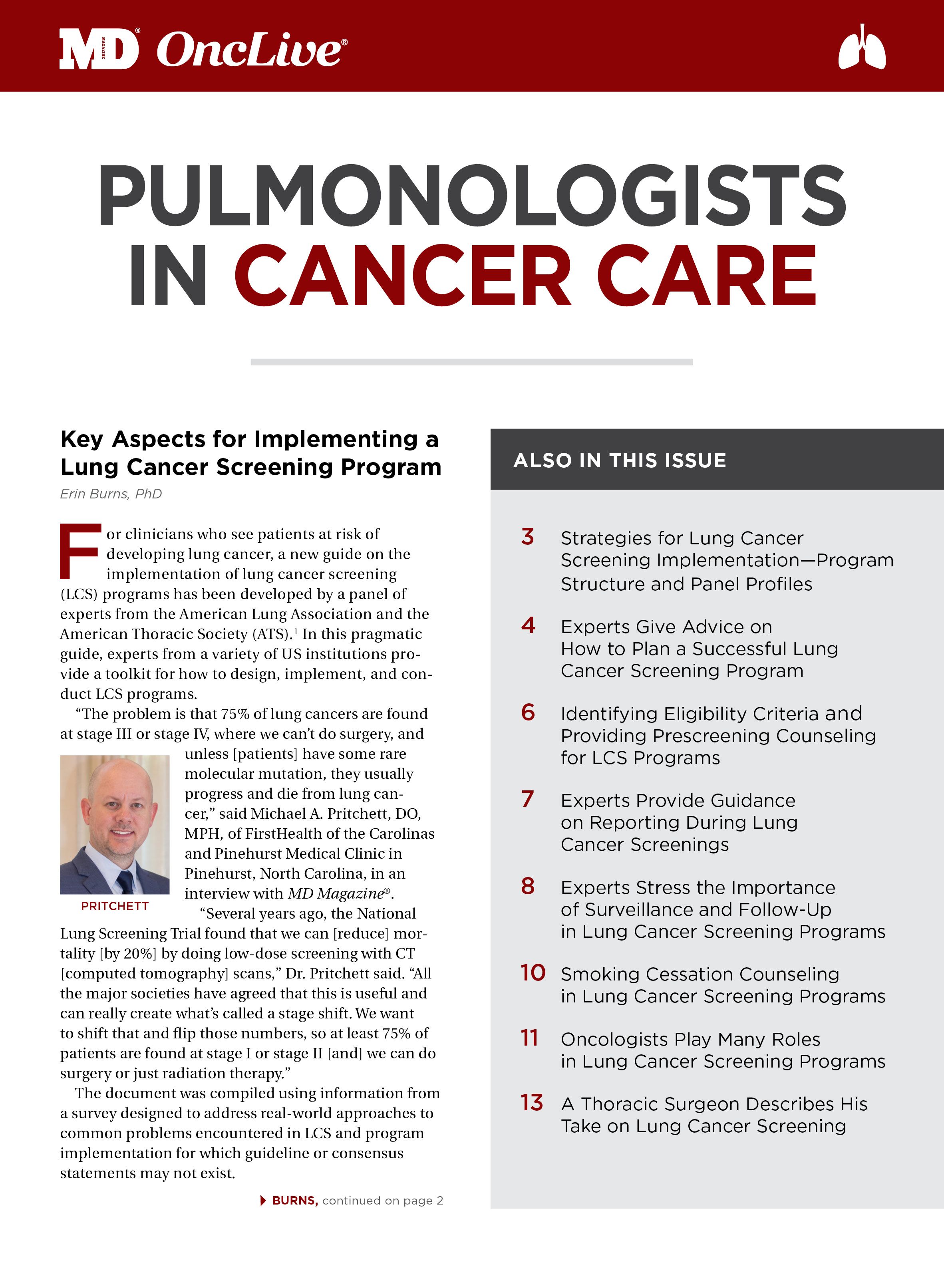Smoking Cessation Counseling in Lung Cancer Screening Programs
The Lung Cancer Screening Implementation Guide was a product of collaboration among 25 experts from 16 institutions. But it was also a product of both the successes and failures of lung cancer screening programs before it.
Peter J. Mazzone MD, MPH

Peter J. Mazzone MD, MPH
The Lung Cancer Screening Implementation Guide1 was a product of collaboration among 25 experts from 16 institutions. But it was also a product of both the successes and failures of lung cancer screening (LCS) programs before it.
The new LCS guideline, from the American Thoracic Society and the American Lung Association, was developed on research into the experiences related to previously established LCS programs.
As guideline author Peter J. Mazzone, MD, MPH, of the Cleveland Clinic explained in an interview with MD Magazine®, no one system is right.
“Every site may have a different way to do it, but regardless of how you put the program together, there are certain elements to the structure of the program that are necessary to make sure you’re screening safely,” Mazzone said. “Many different structures of programs are outlined in the guide…[to] highlight all the different things you need to think about and how different programs have addressed those issues.”
Offering and Promoting Smoking Cessation Counseling
Most programs offer smoking cessation counseling as part of a shared decision making (SDM) visit and throughout the program. Some LCS programs also order pulmonary function studies for new patients to provide an overall picture of lung health.
The SDM visits provide time to discuss smoking cessation with patients to help them understand its importance. Resources for smoking cessation can be provided at SDM visits, at the time of the scans, in letters to patients confirming appointments,and in letters to patients with their test results.
According to a US surgeon general 2014 report, individuals who quit smoking experience lower all-cause and cancer-specific mortality.2 Therefore, including smoking cessation counseling in LCS programs provides opportunities to promote smoking behavioral changes, which can affect patient prognosis.
The results of a study from investigators at Mayo Clinic in Rochester, Minnesota, revealed that patients who received positive LCS results were more likely to quit smoking.3 Furthermore, the rate of quitting was directly proportional to the number of positive test findings.
Tracking Tobacco Use and Smoking Cessation
The SDM visit is an opportune time to discuss the patient’s tobacco use status and history. During the visit, health care providers record information related to packs/cigarettes per day/year, years smoked, and years since quitting, if a former smoker. Computed tomography technologists also ask about their current smoking status at each screening.
This information can then be cross-referenced with the patient’s electronic health record (EHR) to encourage follow-up. Based on the information gathered during the SDM, LCS program personnel will follow up with patients through phone- or web-based models or in person during annual visits.
It is also important to track whether smoking cessation counseling is provided in the LCS program. This can be done via documentation in the EHR as part of the order for the scan, via documentation in the LCS database, or through tracking of quality metrics, which may include:
- The number of individuals screened for tobacco use and/or the number of individuals who present to an LCS screening site
- The number of individuals who received or refused counseling to quit and/or the number of individuals identified as current tobacco users
Resources for Smoking Cessation in LCS Programs
The brief tobacco treatment model, which is consistent with the US Public Health Service’s Clinical Practice Guidelines for Treating Tobacco Abuse and Dependence, focuses on 5 steps: (1) asking patients about tobacco use, (2) advising patients to quit, (3) assessing quit readiness, (4) assisting with quitting, and (5) arranging follow-up. Physicians should provide patients with lists of resources, including links, to help facilitate smoking cessation.
Smoking cessation support can be incorporated into LCS programs in many ways. Resource lists can be included with patient letters; LCS program staff can call current smokers, discuss cessation options, and provide counseling; and LCS programs can offer telephone, in-person, and group counseling, as well as online support groups.
“In my specific program, I’ve found we have advanced practice providers who do these visits. They’ve been trained as smoking cessation counselors. They provide our patients with resources to help them quit and point to resources throughout the community that might be easier for them to access over time,” Mazzone explained.
He says there are insufficient data about the benefits of smoking cessation counseling during regular office visits compared with counseling provided as part of LCS programs.
However, research is ongoing to identify unique features in patients recommended for LCS screening for whom the smoking cessation message may prove more beneficial if conveyed outside of the regular office visit.
“When programs are being developed, everyone recognizes that this may be a captive audience. They’ve come in to be screened, there is some concern and understanding about the consequences of smoking, and so it may be a great time to engage the patient in smoking cessation activities,” Mazzone added.
References
- Thomson CC, McKee A, Borondy-Kitts A, et al. American Thoracic Society, American Lung Association. Lung cancer screening implementation guide. lung.org/assets/documents/lung-cancer/implementation-guide-for-lung. pdf. Accessed November 12, 2018.
- National Center for Chronic Disease Prevention and Health Promotion (US) Office on Smoking and Health. The Health Consequences of Smoking—50 Years of Progress. A Report of the Surgeon General. Atlanta, GA: US Centers for Disease Control and Prevention; 2014. ncbi.nlm.nih.gov/books/NBK179276/. Updated January 2014. Accessed November 5, 2018.
- Townsend CO, Clark MM, Jett JR, et al. Relation between smoking cessation and receiving results from three annual spiral chest computed tomography scans for lung carcinoma screening. Cancer. 2005;103(10):2154-2162. doi: 10.1002/cncr.21045.




